Beauty is not a question of taste – at least with a Spitfire Mk.II!
Beauty is a matter of taste, as one so aptly says - that a Spitfire represents a formal aesthetic pleasure, only very few doubt it. I would like to make this remark at the beginning of this report, because also in the kit description a lot of vocabulary like "wonderful", "beautifully made" or "well solved" will be read. But here too, it is a matter of taste!
Right at the beginning: the price Revell paid for this Spitfire is hard to beat - and for this money you get a nice and beautifully shaped kit. So also the general dimensions are described by those, who actually measured, as convincing, yes in the comparison with other kits as exemplary coherent. But the inner values can also claim to be coherent: Revell alone allows for the presentation of the cockpit with more than forty individual parts really enjoyable time, the structuring of the surfaces with a sound representation of rivets further increases the joy of the kit content.
For the Spitfire connoisseur, there are discrepancies in the design of the spinner, which is too pointed and shows a form used for some series, but is not correct for the machines that can be displayed. A further expert objection concerns the ailerons, which were still covered with fabric in these early Mk.II models and thus, as on the existing parts, should not show any rivet structures. All those who are disturbed by this find comfort in the offer of the retrofitting industry and the possibilities to remedy this without much effort.
Is it any wonder that the accuracy of fit has proven to be very good with this kit? In fact, this was a model building project that went off relatively quickly, leaving time and resources for a few refinements. This includes replacing the cockpit with Eduard's spectacular Brassin interior. This represents another dramatic improvement over the kit version mentioned above.
Changes were also made to the design of the position lights at the surface ends and at the rear: here, a tip of CA glue on a coloures background replaced the blunt plastic ends. Once applied with the tip of the needle, this adhesive hardens in a matter of seconds, the surface tension ensures (and if all goes well) an appropriately round shape. Minor improvements were also necessary in the form of brake cables on the landing gear legs. This is also the point of criticism: in my opinion the suspension legs are not detailed enough, the inside of the fairing seems to be too wide and rough.
A real adventure was the installation of the opened cockpit door. Fortunately, you can't see it from the finished model, but the resin flap was much wider than the opening Revell intended for it. Here I had to work with the scalpel to remove material from the painted model in order to get a good fit.
The attachment of the cockpit hood was also "suspensful" in the literal sense of the word. The component is unfortunately dimensioned for the seat with the cockpit closed. The result is that when the cockpit is open, the brittle transparent part has to be pressed onto the back of the fuselage with a lot of sure instinct until the two lower ends latch into the guide rails. In order to attach this pressurized constellation, I had no choice but to attach the transparent part with CA adhesive. Even if this worked well in this case and the glue did not cloud the transparent part, I would like to see this kit from Revell as a remedy for further issues.
The decals coming from the component are sharp, printed without offset and with suitable coloring and are usable - but they didn't excite me. Unfortunately they show a tendency to "silver" which cannot be eliminated by good preparation and post-processing with glossy clear varnish. Only the massive use of decal softeners was able to force a satisfactory result in the affected areas. Last but not least: the Spitfire shown here shows P7665, an aircraft of the No.65 Squadron (East India) with the identification YT-L, as it was flown from Kirton-in-Lindsey in July 1941.
My summary of the kit is consistently positive: this will certainly not be the last Spitfire I will build from this kit! Revell has, despite the few compromises, really made a great contribution to this aircraft beauty on an attractive large scale!
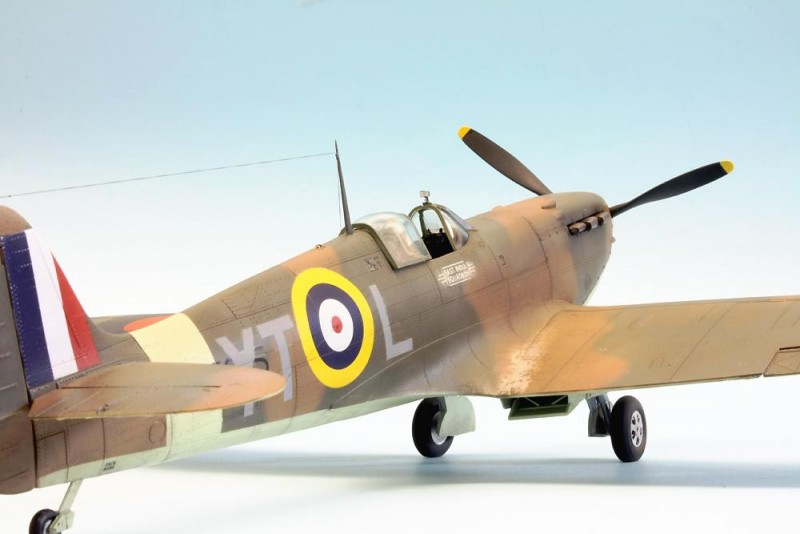
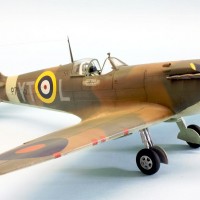

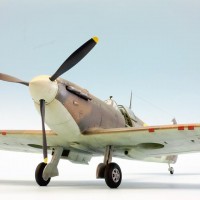
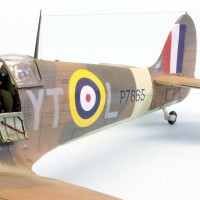
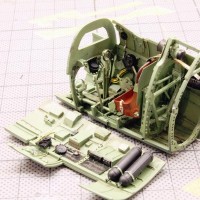
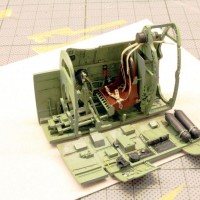
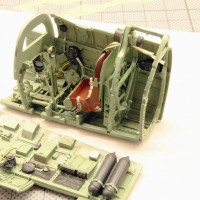
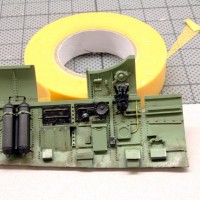


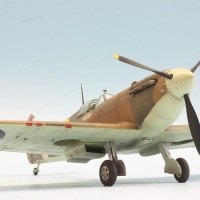
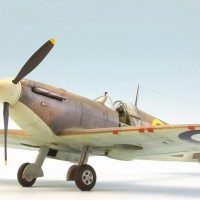
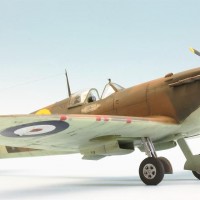
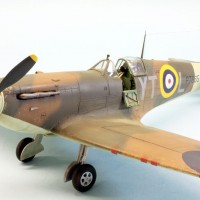

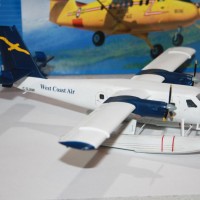
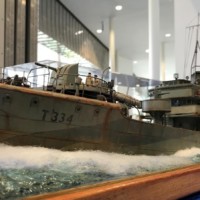
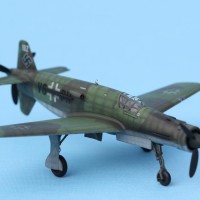
That's one good looking Spit Roland. That Eduard cockpit is quite an improvement. Were there any fit issues getting it to work with this Revell kit?
I think of the movie "On the Waterfront." Where Brando say's to paraphrase Charley," I coulda' been a contender. I could've been somebody". This Spitfire ... Lots of potential had Revell done a little more research in doing this kit. I believe they looked at a Warbird that had been restored with later Mark parts such as the oil cooler and used folks who had no clue about Spitfires.
The marketing strategy of Revell with some of these 1/32nd kits has been to provide a reasonably price core kit that gives the modeler the option to stick with the plan or modify the kit further depending on your wallet into a jewel. The Mustang, Me-109 and the Fw-190 are solid starting pointings. The poor Spitfire ..."Hope springs eternal ."
Roland, a lot of work and some sharp painting and after market shows that yes with some modeling skill and elbow grease ...proves "Hope springs eternal." and the kit can made very presentable.
Two thumbs up.
I'm not a Spitfire guy (despite being English) so I don't know the nuances of the various Marks/versions. But I do know a nice model when I see one, and yours looks great. Superb cockpit and restrained weathering; very nice.
Your detail work and painting skill is the kit's savior. Excellent work.
These larger 1/32 scale Revell kits offer a good place to start with. You get a lot for the amount of money you spend on them. Granted there are a few things that could have been done better by the design team, but it seems there's not a kit out there without a flaw of some sort that hasn't been brought forward by a model critic at some point. Some claims are valid on some kits, while others are not worth the trouble caused by all the hype created by the "few".
I really like what you have done with your build. It's up to your usual high quality standard... What's not to like about a Spitfire ? The cockpit and paint work are exemplary.
Well done my friend...
and "liked".
Thank you all for your replies and interest on this build- I feel impressed and motivated by your words! Tom, the "Brassin" cockpit is a real jewel and fits without any problems into the fuselage halves. Of course, as with much of Revells recent offerings, these forms are a stable basis to make further details -if wished.
I will probably build a second Spitfire; this time with a refinement in the form of an Aerobonus pilot figure and with rotating props - the experiences with the Airfix Mustang III have whetted my appetite!